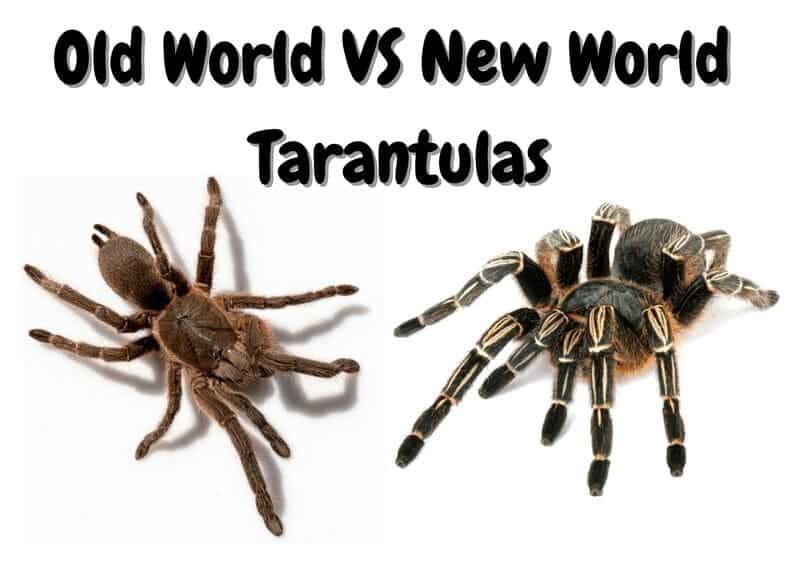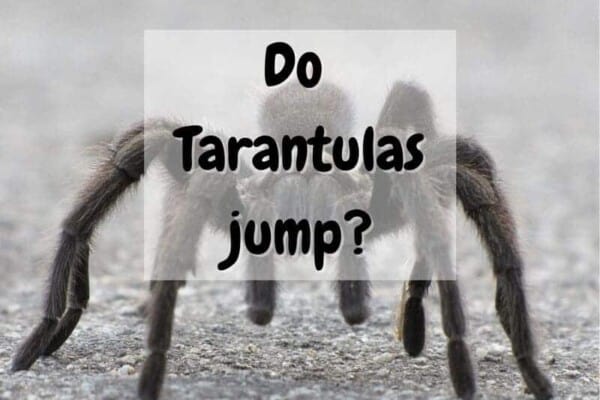Once you start to research tarantulas, you are going to quickly run into the terms New World and Old World tarantula, and there is often not much explanation as to what exactly that means. However, when you are trying to pick a tarantula to bring home, it is important that you understand the differences, so you do not end up with a spider you are not ready to handle.
The main difference between the Old World and New World tarantulas is their aggression level. Old World tarantulas are generally much more likely to bite and harder to handle, while most New World tarantulas are relatively docile and good for beginners.
In this article, we are going to go over all the important differences between Old World and New World tarantula so you can understand what people are talking about when they call one spider Old World and another New World.
1. Old World VS New World Tarantulas – Geographic Location
The terms Old World and New World were actually coined to describe different locations. After Christopher Columbus “discovered” the Americas, the Europeans started to refer to North and South America as the New World and areas that they had known about for longer (Europe, Africa, and Asia) as the Old World.
The most full-proof way to figure out if a tarantula species is New World or Old World is to figure out where it originates from. If it is from Africa, Asia, or Europe, it is considered Old World. Tarantulas that are originally from Australia are also considered Old World because they are most similar to those found in Africa, even though Australia is not technically Old World because it was not recognized until the 17th century.
On the other hand, New World tarantulas are any that are from the western hemisphere or North and South America.
2. Old World VS New World Tarantulas – Speed and Aggression
For tarantula hobbyists, one of the most important differences between Old World tarantulas and New World tarantulas is their speed and aggression. Old World tarantulas typically can move at lightning-fast speeds and do not take well to being handled.
Pretty much all tarantulas will try to flee when threatened, but Old World tarantulas are much more likely to bite if they do not see fleeing as an immediate solution. Often, owners say that Old World tarantulas will even move into their threat posture when a person goes to refill a water dish or even just walk past the enclosure.
On the other hand, New World tarantulas are generally much more suited for beginner tarantula owners. They move much slower than Old World tarantulas, and they tend to be much less aggressive. If you are looking for a tarantula you can handle, it is better to look at some New World Species.
3. Old World VS New World Tarantulas – Urticating Hairs
Tarantulas can fling their hair as a defense mechanism against predators. However, this is only the case for New World species. New World tarantulas have what is called urticating setae hairs that cover their upper back. These hairs have barbs that can puncture the skin of some predators and are extremely irritating. The urticating hairs are the New World tarantula’s primary mode of defense.
The exact effect of these hairs on humans varies from species to species, and it depends on how sensitive you are. Most of the time, the hairs will cause itchiness, a skin rash, or some painful irritation. While they usually only cause mild side effects, it is best to see a medical professional whenever you come in contact with the hairs because there can be more severe reactions, especially if you accidentally breathe some of the hairs in.
On the other hand, Old World tarantulas typically rely on their fangs and venom as a defense mechanism, which might explain why they tend to be more aggressive. However, just like the hairs usually only cause mild symptoms, a tarantulas bite usually only causes mild symptoms in humans.
4. Caring For Old World VS New World Tarantulas
Food
There is actually a lot of similarities between caring for Old World vs. New World tarantulas. For instance, they both have very similar diets. No matter what kind of tarantula you have, it will need a diet made up primarily of insects.
Most owners feed their tarantulas crickets. Many species will only need one or two crickets a week, while large species may need closer to six crickets. Tarantulas can also eat other insects like roaches and waxworms, and you can even mix some fruits into your tarantula’s diet.
Housing
They are also very similar when it comes to housing. The general rule of thumb is that the enclosure needs to be four times longer and four times wider than your tarantula when its legs are fully extended.
Now, how exactly you need to set up the terrarium (and what shape you need) does depend on whether or not your tarantula is a species that likes to burrow and live on the ground (terrestrial tarantula) or climb up in trees and other structures (arboreal).
Handling
The main difference when it comes to caring for an Old World tarantula vs. a New World tarantula is handling. New World species are usually relatively docile and easy to handle. While most tarantulas are happy being left alone, picking up your New World tarantula every once in a while is perfectly fine.
On the other hand, Old World tarantulas are much more delicate and will not enjoy being picked up or handled. If you do, they are more likely to either bite you or get out due to their quick speed.
Three Great New World Species
1. Mexican Red Knee Tarantula
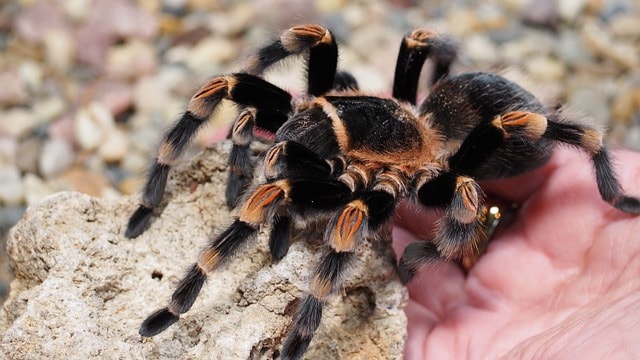
Mexican Red Knee tarantulas are similar to what you likely picture when you think of a tarantula with black and orange coloring, especially if you are a beginner tarantula hobbyist. Additionally, they are one of the most docile species of tarantulas, making them a great option for beginners. If they ever do feel threatened, they will almost always run instead of bite.
- Scientific Name: Brachypelma smithi
- Size: up to 5.5 inches
- Lifespan: five years (males) and thirty years (females)
- Price: usually $100 to $200
2. Chilean Rose Tarantula
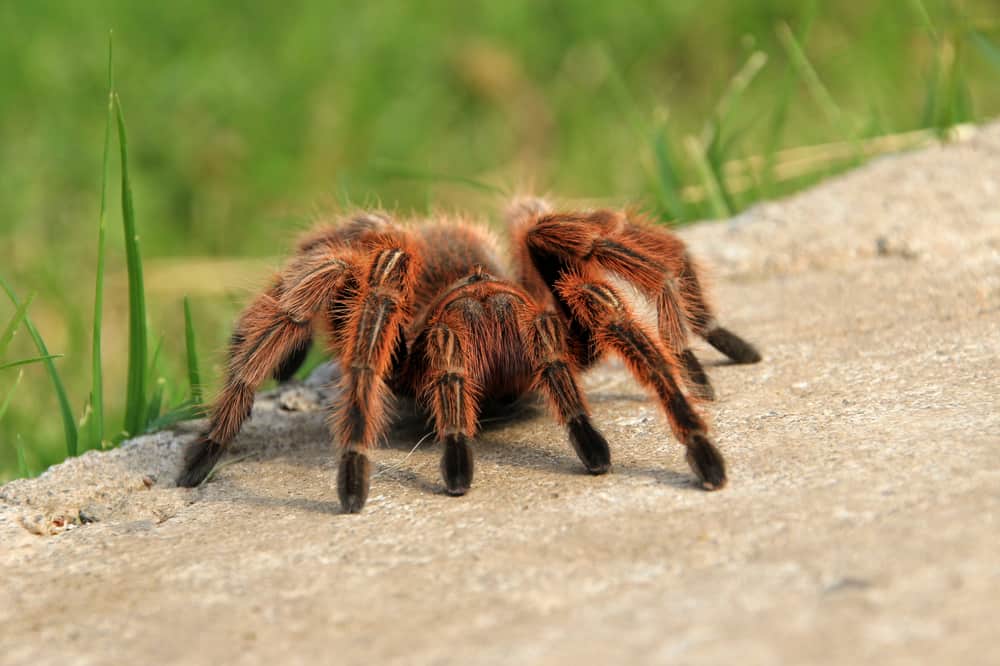
Chilean Rose tarantulas are a little bit harder to handle than the Mexican Blood Leg, but they are still a really docile species. They can get rather nervous and may fling their urticating hairs in your direction if they feel threatened, but their hairs are only mildly irritating, and they almost always will try running away first.
- Scientific Name: Grammostola rosea
- Size: about 3 1/2 inches (males) and 5 inches (females)
- Lifespan: five years (males) and fifteen to twenty years (females)
- Price: usually around $60
3. Antilles Pinktoe Tarantula
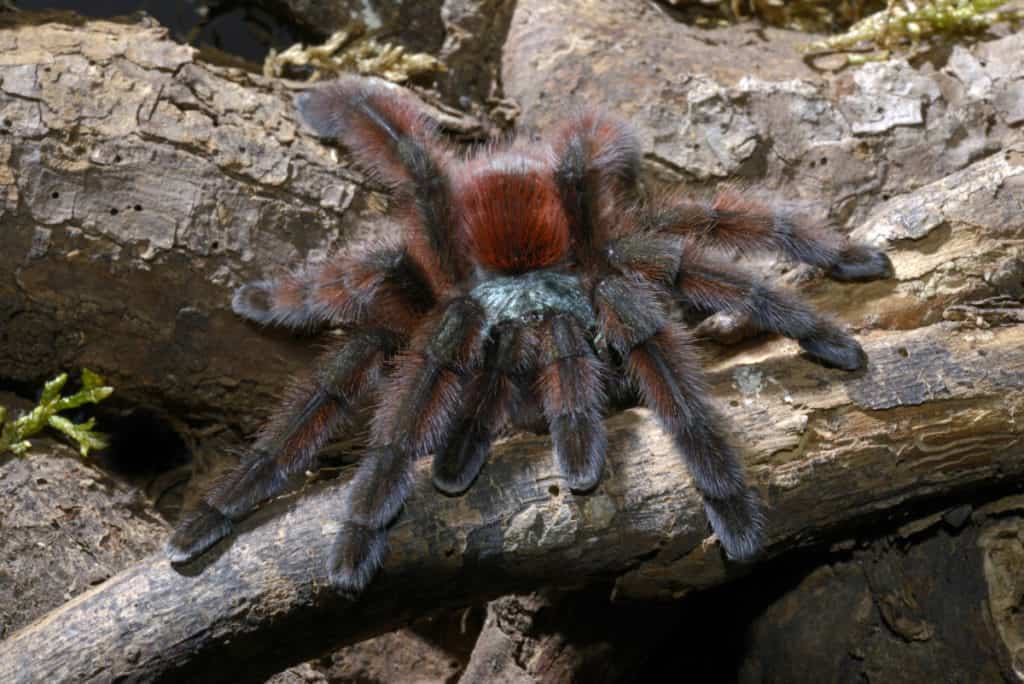
If you feel ready for a tarantula that is a little bit more challenging but not quite ready to jump into Old World species, the Antilles Pinktoe is a great option. These arboreal tarantulas are really interesting to look at with their electric blue hairs and rusty highlights all over their bodies. However, since they are very agile and are a little bit more skittish, it is best to handle them with care and move them when absolutely necessary.
- Scientific Name: Caribena versicolor
- Size: about 5 to 6 inches
- Lifespan: two to three years (males) and twelve years (females)
- Price: usually $40 to $80
Three Great Old World Species
1. Gooty Sapphire Tarantula
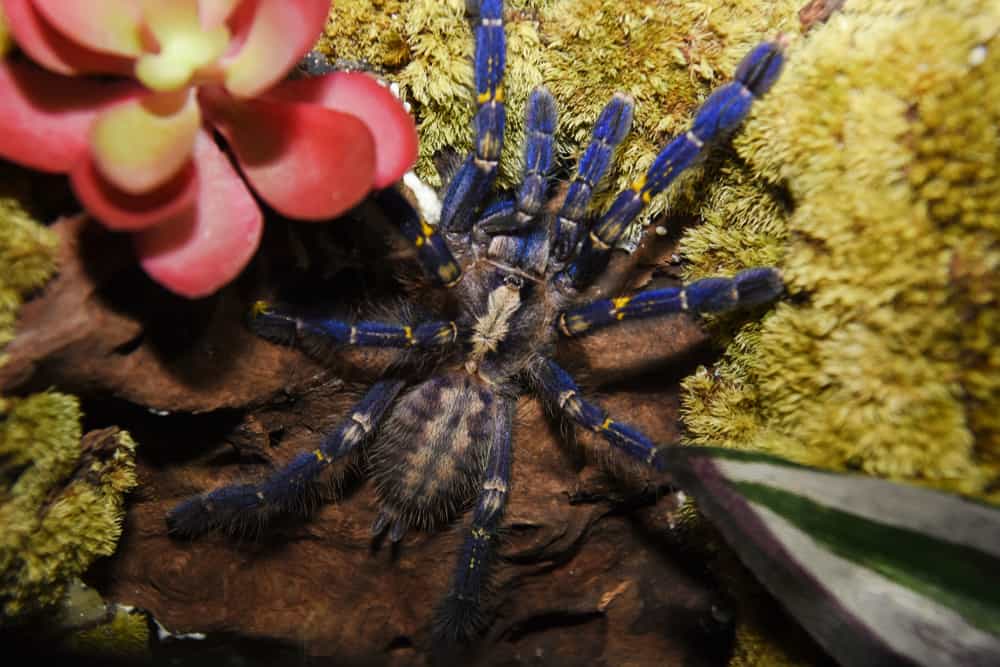
If you are interested in an Old World arboreal or bird spider, you might want to consider the Gooty Sapphire tarantula which comes from central-southern India. They have a beautiful blue color, unique looks, and stunning patterns. It is mildly aggressive but will let itself be handled on a good day.
- Scientific Name: Poecilotheria metallica
- Size: 6-8 inches
- Lifespan: three to five years (males) and twelve years (females)
- Price: usually $100 to $200
2. Rear-Horned Baboon Tarantula
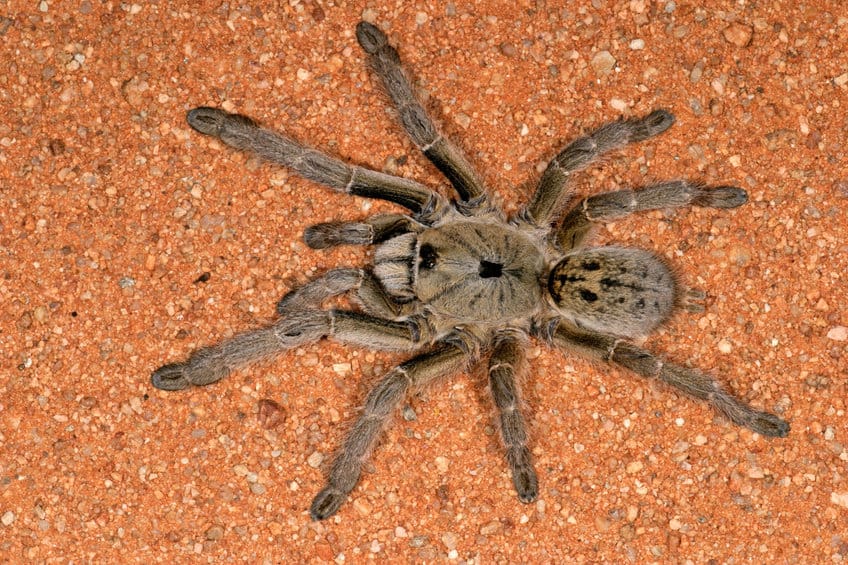
Most tarantula hobbyists consider the Rear-Horned Baboon tarantula to be one classic Old World tarantula to own. They come at a very reasonable price and can be a lot of fun because while they hide in their burrow most of the time, they produce a lot of webbing and are very fast at catching their prey. However, they still are Old World which means they do tend to be more defensive and speedy.
- Scientific Name: Ceratogyrus darlingi
- Size: about 4 inches to 6 inches
- Lifespan: five years (males) and twenty to thirty years (females)
- Price: usually $40 to $80
3. Orange Baboon Tarantula
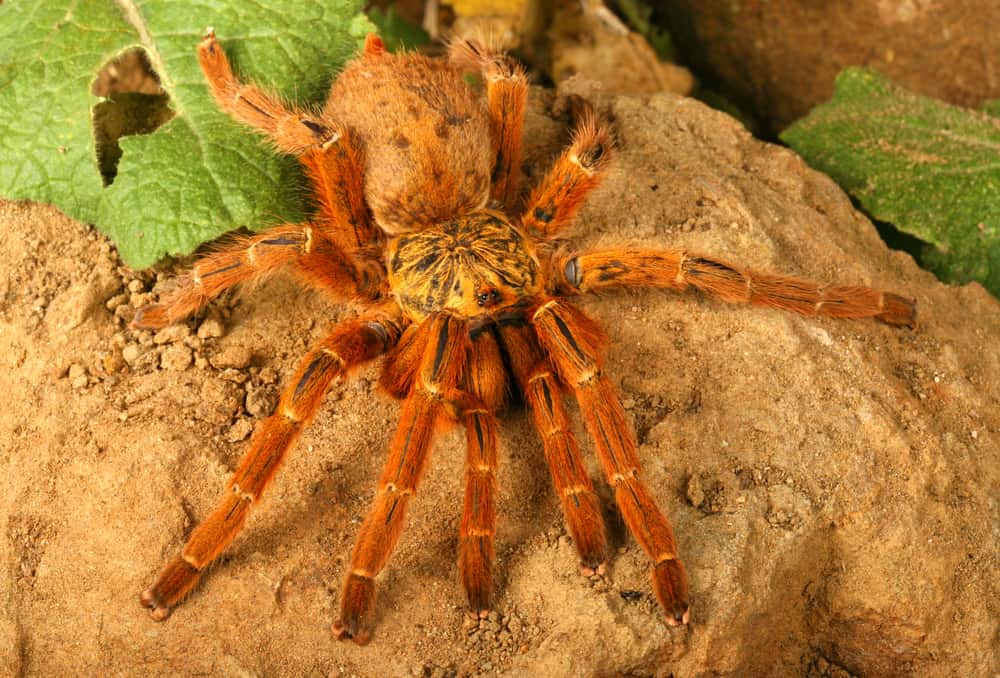
The Orange Baboon tarantula is also known as the “Orange Bitey Thing” because of its fierce character and reputation for aggressiveness. This spider is a beautiful-looking orange tarantula that should not be handled at all. If they do feel the need to get defensive, their bite is very painful. However, its behavior makes it an interesting spider to keep.
- Scientific Name: Pterinochilus murinus
- Size: about 4 inches to 6 inches
- Lifespan: two to four years (males) and ten to fifteen years (females)
- Price: usually $30 to $70
References and further reading:

